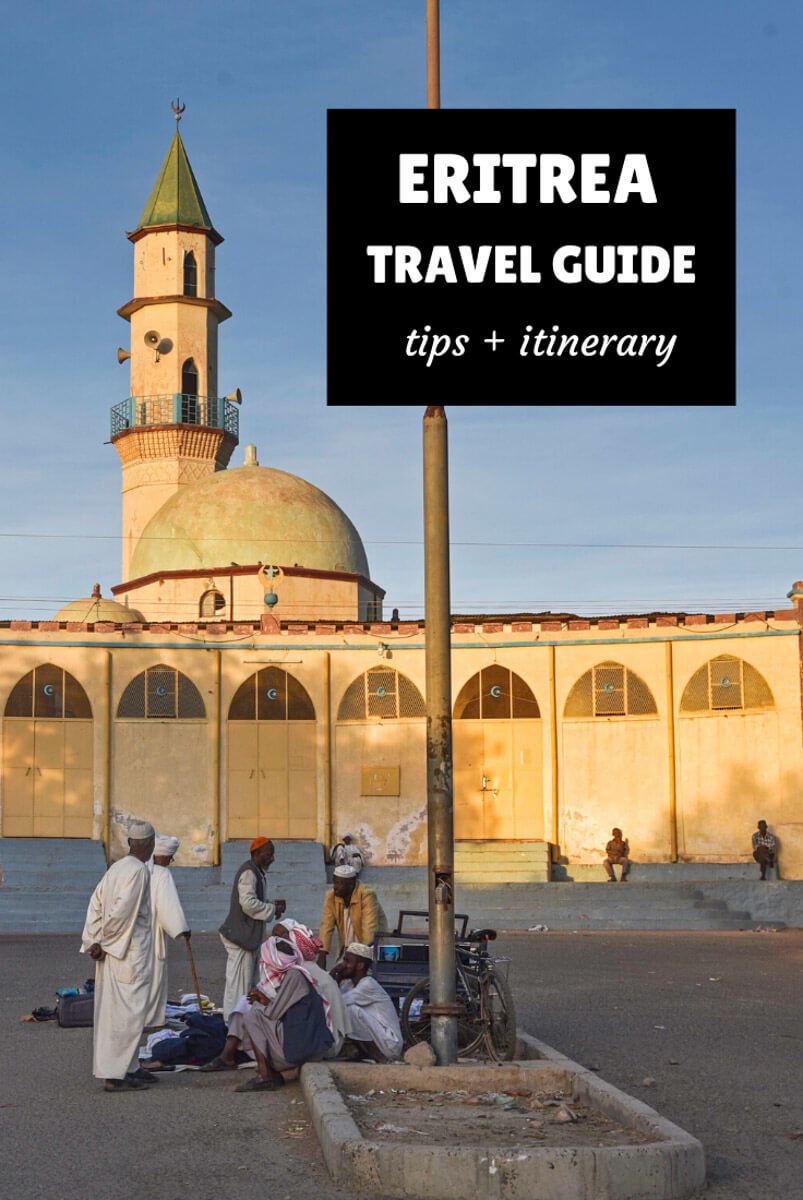34 Comments
Last updated on November 18, 2024
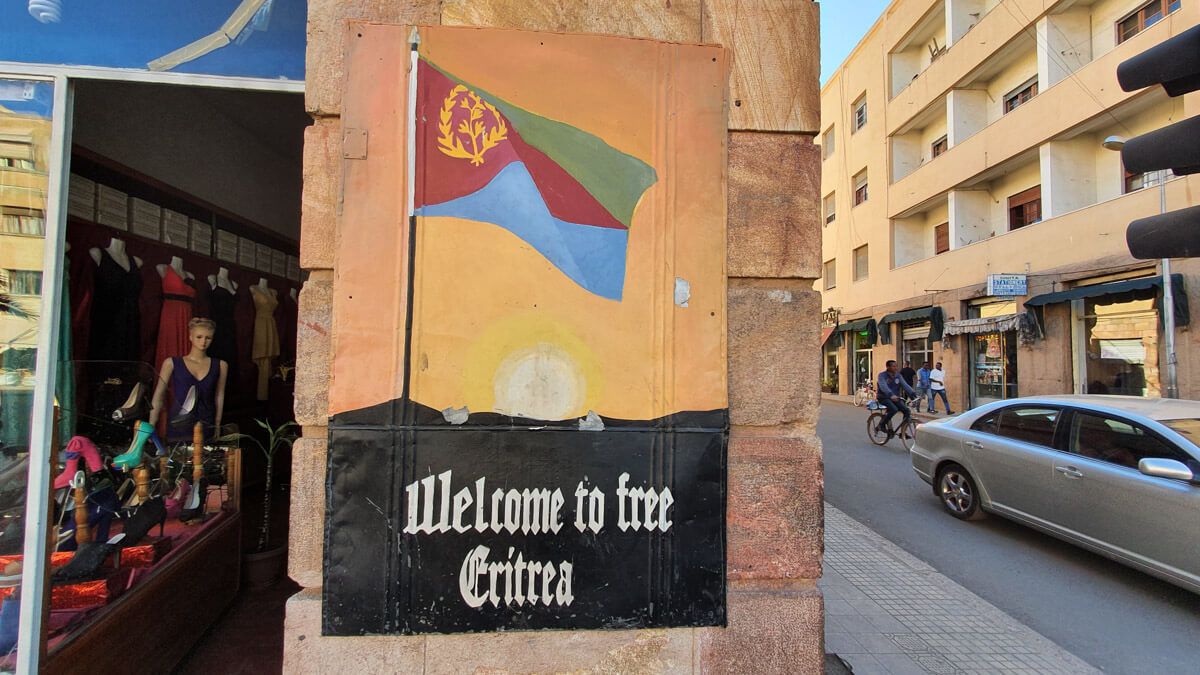
Wanna travel to Eritrea with Against the Compass?
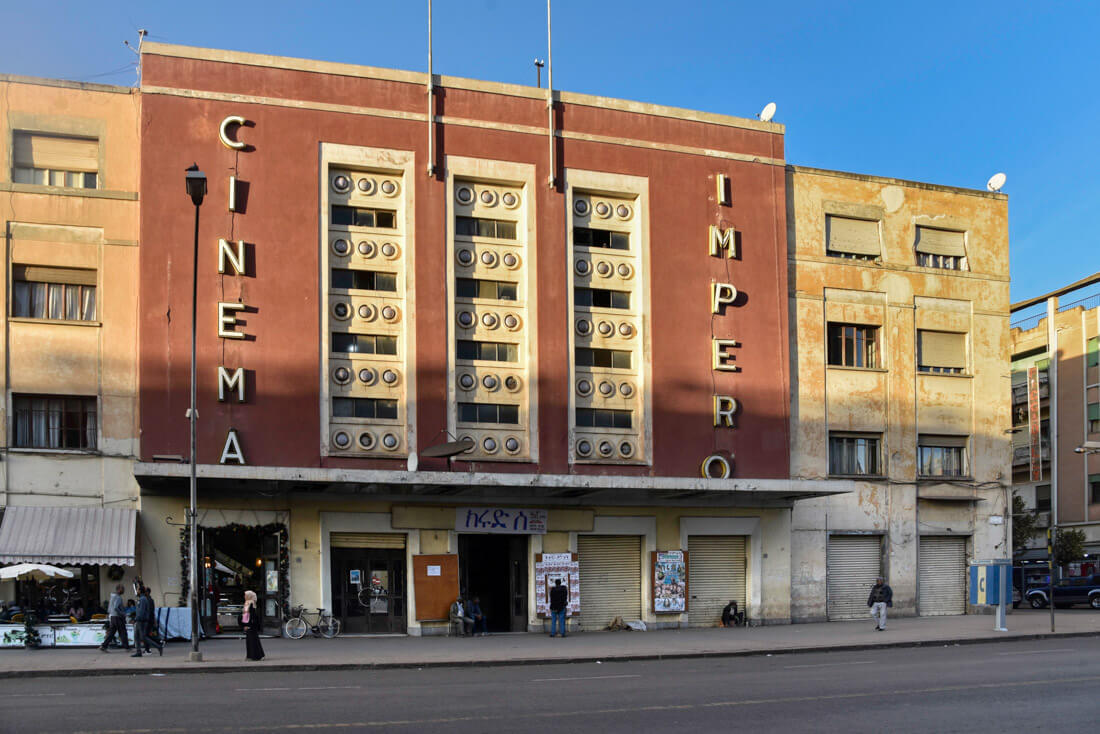
Join a group of like-minded travelers in our next scheduled tour in Eritrea on:
February 21st to 28th, 2025
Popularly known as the North Korea of Africa for being the most repressive and hermetic country on the continent, Eritrea is a real off the beaten track, undiscovered gem which not many people know about.
Paradoxically, this is a surprisingly chilled-out and tourist-friendly destination, filled with kind-hearted people, huge diversity, and loads of unique things to do.
Only being independent since 1991, after a 30-war against Ethiopia, traveling to Eritrea is the ultimate offbeat experience in Africa.
This guide contains everything you need to know about doing tourism in Eritrea, including visas, permits, tips and a 9-day itinerary.
For information on places to visit, check our Eritrea Itinerary.

In this Eritrea travel guide you will find:
our recommended travel insurance for Eritrea
IATI Insurance is one of the very few that covers travel in Eritrea.
🇪🇷 Introduction: what’s tourism in Eritrea like
Eritrea is a tiny nation sitting on the shore of the Red Sea, nestled between Sudan, Djibouti, and Ethiopia.
When I was traveling in Ethiopia, many travelers asked me what traveling in Eritrea was like, and I always told them:
Eritrea is sort of an extension of Ethiopia, very similar, but extremely different at the same time.
The dominant group in Eritrea are the Tigrayans, a group of people who share the exact same culture as Ethiopians from Tigray region, in the north of the country, one of the most touristic regions in Ethiopia.
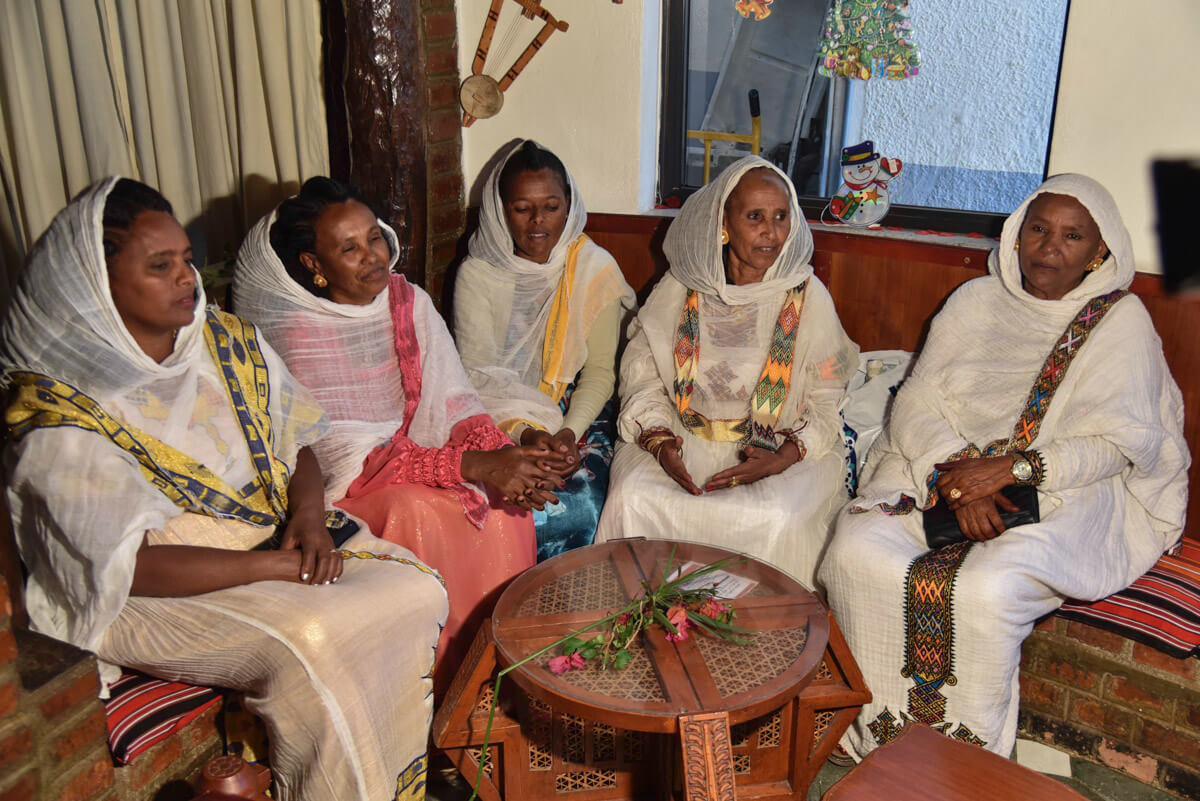
However, in Eritrea, you also find many different ethnic groups and what makes tourism in Eritrea unique unlike Ethiopia is that this used to be an Italian colony, just like Libya, from 1890 until 1943.
And, since this colonization is so recent, plus the Italians created the country pretty much from scratch, the Italian influence is very present, and visible, especially in Asmara, which was entirely built by the Italians, a capital filled with art deco buildings, palm-lined streets, and lovely cafés whose terraces are packed with Eritreans slurping delicious macchiatos.
Unlike most capitals in Africa, Asmara has a sophisticated African style and is a reason in itself to visit Eritrea.
However, once you leave the capital, you’ll find yourself in one of the most traditional countries on Earth, like if you traveled back in time.
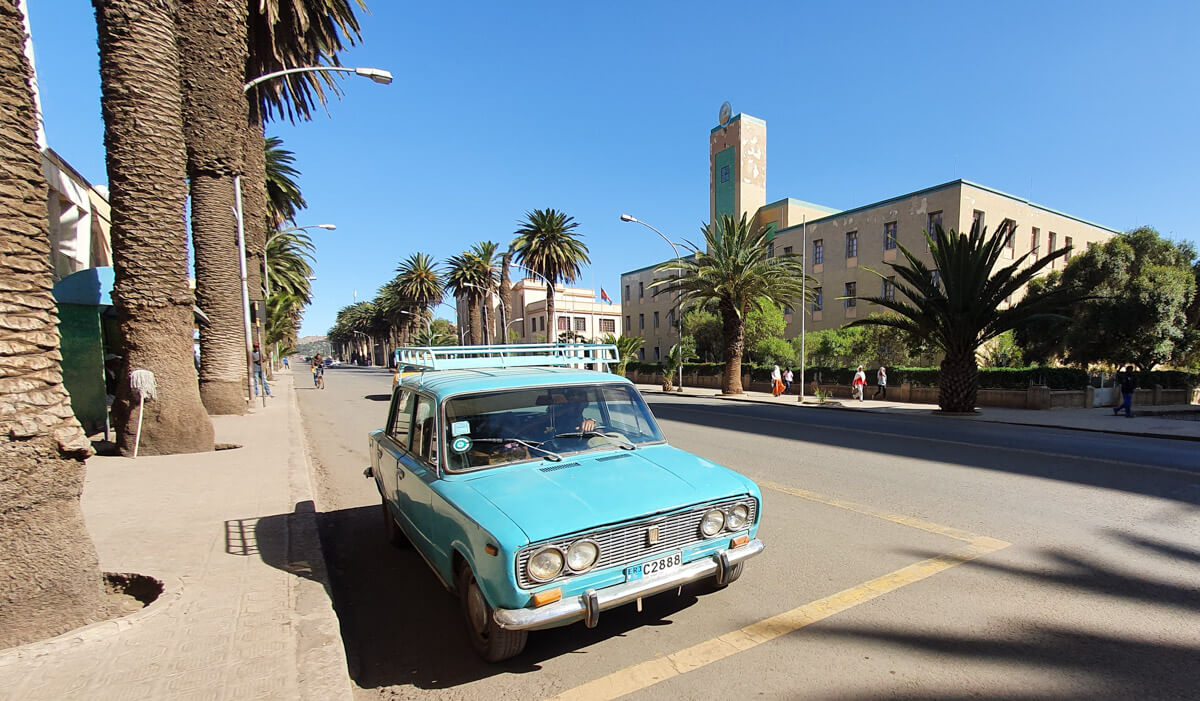
🪪 How to get a visa for traveling to Eritrea
Getting a valid tourist visa for visiting Eritrea can take time and money but it is easier than most people assume it will be.
1 – Getting an Eritrean tourist visa via embassy
This is the cheapest way but it can take a lot of time, usually more than 1 month; plus there are only a small number of Eritrean embassies around the world, typically in those countries where there is a significant Eritrean population, including France, the UK, Italy, Sweden, Switzerland and the USA.
If your home country doesn’t have an Eritrean embassy, it is also possible to mail both your passport and application form to the nearest one, but I think they are very unreliable.
Contact your nearest embassy to find out all the specific requirements & instructions.
Your experiences and reports are welcome.
2 – Getting a tourist visa on arrival (via a travel agency)
This is the most convenient way of getting a visa for Eritrea.
Visa on arrival is available to those travelers who book a tour for Eritrea with a local tour operator.
They’ll issue a Letter of Invitation, which you must show to the respective authorities when arriving in Asmara.
What kind of tour do you have to book?
It depends on the tour operator. They may either charge you an administrative fee or make you book a few-day private tour.
The first time I traveled to Eritrea was in 2020. The local agency charged me 250 USD for processing my visa and 70 USD for a minimal tour, which included airport pick up and drop off, plus 1 night in a relatively good hotel, so 320 USD in total.
I have been quite a few more times since then, but always as a tour leader for our group expeditions.
By joining any of our groups, you will get your visa on arrival. These are the expeditions we have scheduled in 2024-2025:
- January 18th to 26th, 2025 – SOLD OUT
- February 21st to 28th, 2025 – APPLY NOW
- November 7th to 18th, 2025 – APPLY NOW
- November 21st to 28th, 2025 – APPLY NOW
How much does the visa cost?
The visa costs 70 USD, and must be paid in cash at the airport, in US dollars.
Processing your visa at the airport can take a while, sometimes up to 1 hour, depending on how many Eritreans with a foreign passport were on your flight.
How long is the visa valid for?
The visa for Eritrea is valid for 30 days.

Permits. Is independent travel in Eritrea allowed?
Eritrea is known as the North Korea of Africa for a few reasons, one of them being that a large part of the country is heavily restricted and off-limits to tourists.
Another reason is that you need to get a specific permit for any place you visit outside of the capital, one for each different place you visit.
How to get your travel permits for Eritrea
Travel permits can be obtained at the Ministry of Tourism’s office, a small office located right in the city center, just across the big Roman Catholic Church.
Each permit costs around 150 nakfas (10 USD) and they typically take half a day to process. For example, if you apply in the morning, you can pick it up in the afternoon and, if you apply in the afternoon, you can pick it up the next day.
By the way, you’ll also need a permit to visit the tank graveyard just outside of the city. This permit only costs 50 nakfas and is issued instantly, from the moment you pay for it.
Important: The office is closed on Sunday.
When applying for your different permits, you must specify the exact dates you are going to spend in each place, so you really need to plan your day-by-day itinerary.
This sucks because it means that there is no room for improvising.
To be honest, the police never asked me for the permit, but all hotels did and, if the day you arrive doesn’t match the specified date in the permit, they won’t host you.
What happens if you travel without a permit?
I did visit one town (Foro) in which a special permit was required but I didn’t have one.
There was a checkpoint right at the town’s entrance but the bus didn’t stop and, since it was market day, the village was packed with people from all over the region. I went there on a day trip from Massawa.
According to my local partner in Eritrea, the reason they don’t ask for your permit is that they just assume you’ll have one.
Which places in Eritrea are open to travel?
When you are traveling in Eritrea, it doesn’t look like you are traveling in one of the most repressive states in the world: you barely see any police, and the atmosphere is so chilled that you never feel any sort of tension.
However, it’s important to remember that, as a traveler, you can only visit a fraction of the country and, during my trip in Eritrea, I could never stop wondering:
What is actually going on in that unknown part of Eritrea?
While it’s true that certain areas are off-limits due to border tensions, other regions are closed for no apparent reason, nobody knows what are they trying to hide.
In any case, a significant part of Eritrea is open to travelers.
What happens if you visit a forbidden area?
During my first trip to Eritrea, I met one Italian who tried to sneak into a no-go area near Keren, but he got caught by the authorities at the first checkpoint. They held him for a few hours before letting him go. No big deal, he said, but that’s because that area was near Keren, not super sensitive. I’d not try this in other further areas.
Map of the places which are good to visit in Eritrea
Asmara: The capital is all traveler’s first introduction to Eritrea. This is the only place for which you don’t need a permit and in my humble opinion, the best place in Eritrea, mainly due to the Italian heritage that makes the city so vintage, the closest thing to traveling back in time.
Keren: The predominantly town of Keren is more similar to Sudan to the Eritrean capital. The most famous market in all of Eritrea takes place here every Monday.
Decamhare: A town southeast of Asmara that served as the industrial hub for Italian Eritrea. At its peak in 1938, almost half the town’s inhabitants were Italian citizens. Decamhare still has good examples of colonial architecture.
Qoiato: A pre-Axumite archaeological located at 2,600m on the edge of the Great Rift Valley, from where you get stunning canyon views.
Senafe: The only place close to the Ethiopian border, which you can visit. There isn’t much to do in the town itself except for hiking to the top of a mountain, which also happens to be a Christian pilgrimage place for Eritreans.
Massawa: A coastal city occupied by the Ottoman in the 16th century, hence the different feel and architectural style.
Foro: A small village whose main interest is the weekly market that takes place on Thursday, and where you are likely to meet Afar people.
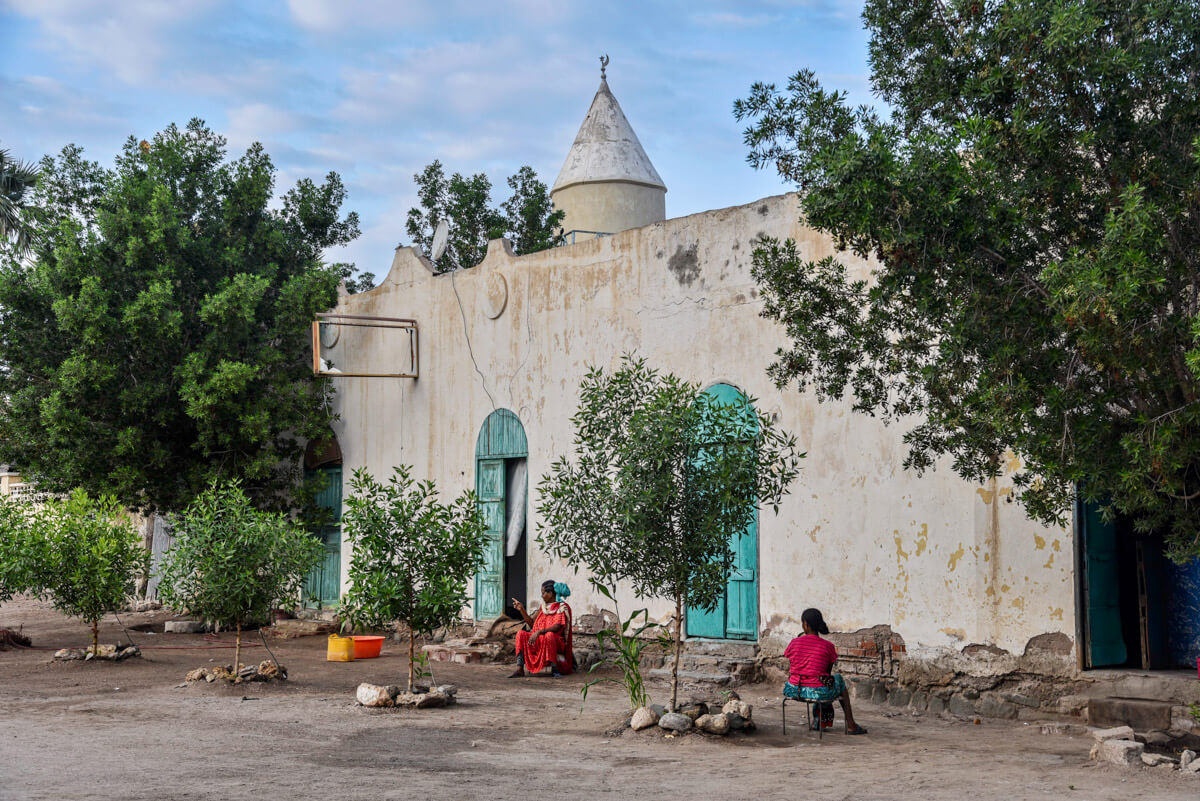
🚑 Travel insurance for Eritrea
Most travel insurance companies don’t cover for travel in Eritrea, except for IATI.
I recommend it because:
- Only travel insurance company that covers Eritrea
- They have different plans for all budgets
- Covers senior citizens too
- Readers of this blog can get a 5% exclusive discount
⛅ Best time to visit Eritrea
Do you know what slogan the Ministry of Tourism uses to promote tourism in Eritrea?
Eritrea, 3 seasons in 2 hours.
Sitting at an elevation of 2,235 meters above sea level, Asmara might be one of the highest capitals in the world, a city which enjoys relatively cool weather all year round and, by only driving a few hours, you can get to the green rolling hills around Ginda, the humid and utterly hot shores of the Red Sea or the desert plains near the Afar region.
Best time to travel to Eritrea: November to February
The winter months are the best season to travel to Eritrea, when the weather is cool in most parts of the country.
Worst time to travel to Eritrea: June to September
In summer, the weather along the coast (Massawa) and Keren is unbearable, but if you only intend to visit Asmara, it should be all right.

🛫 How to get to Eritrea
Eritrea shares a border with Sudan, Ethiopia, and Djibouti but, as of today, all borders are closed, at least to foreigners.
After Eritrea and Ethiopia signed the Peace Agreement in 2018, they agreed to open the border after decades of being shut down but, unfortunately, Eritrea decided to close it again after a few months, as many of the Eritreans who crossed into Ethiopia never came back in an attempt to seek freedom.
Therefore, the only way to travel to Eritrea is by flying in.
You can fly to Asmara from Istanbul (Turkish Airlines), Addis Ababa (Ethiopian Airlines), Cairo (Egypt Air) and Dubai (FlyDubai).
Update 2024: Ethiopian Airlines has suspended all flights into Asmara indefinitely, starting from October 2024.
Tours for Eritrea
Eritrea isn’t the easiest country to travel independently.
If you still wish to go solo, this post is an excellent travel guide to Eritrea.
Otherwise, know that we run group tours to Eritrea all year long, the following expeditions are scheduled on:
- January 18th to 26th, 2025 – SOLD OUT
- February 21st to 28th, 2025 – APPLY NOW
- November 7th to 18th, 2025 – APPLY NOW
- November 21st to 28th, 2025 – APPLY NOW
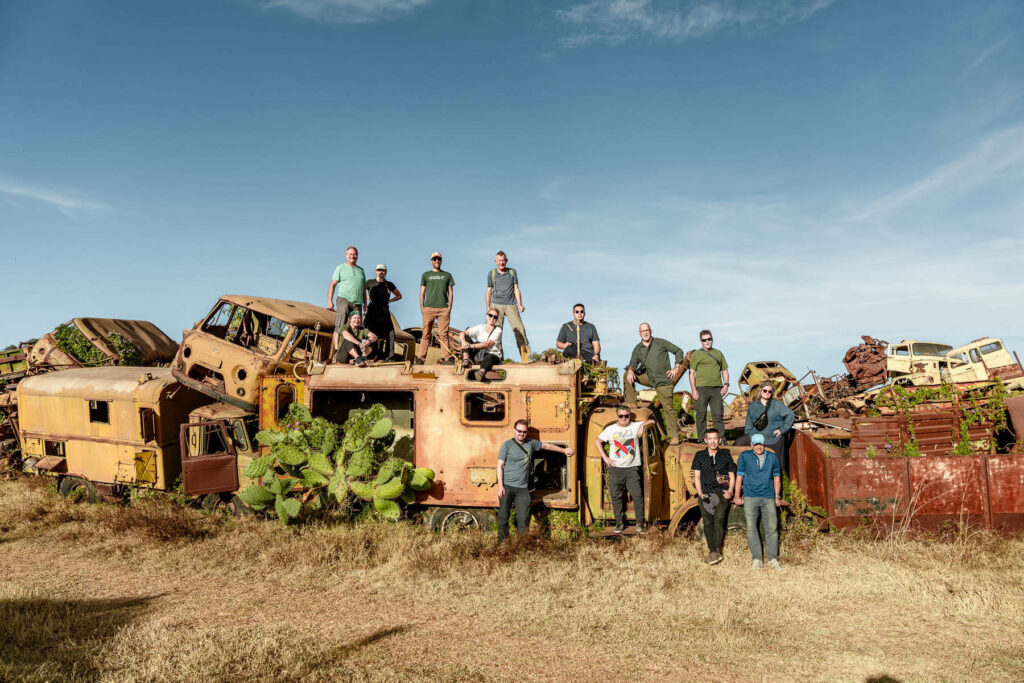
📚 Best books for backpacking in Eritrea
Understanding Eritrea: Inside Africa’s most repressive state, by Martin Plaut
Amazing book written by a BBC journalist, which helped me to understand the complexity of Eritrea, as well as its relationship with Ethiopia, a key factor in the evolution of the country.
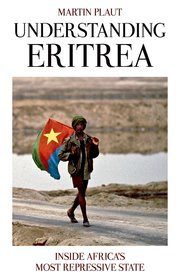
Eritrea travel guide by Bradt
The last edition is from 2007 (the one I have) but the good news is that Bradt is releasing a new one in December 2020. Bradt specializes in offbeat destinations and has the most insightful guidebooks about destinations in Africa. I love Bradt.
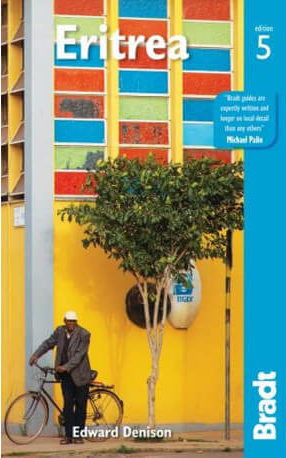
👳♂️ Eritrea: the people and culture
Despite its small size – only 6 million people – Eritrea is a complex society, ethnically speaking.
Ethiopia is also home to several ethnic groups, especially in the Omo area. Read my Omo Valley travel guide
As I said in the introduction, Tigrayans are the dominant group but Eritrea is composed of 8 more different ethnicities: Tigre, Rashaida, Afar, Saho, Bilen, Beja, Kunama and Nara.
If you visit Keren, you will meet the Tigre, who are Muslim.
If you go to Foro or any place south of Massawa, you are likely to meet Rashahida or even Afar, if you go to Foro on a market day.
Here you can read more about ethnic groups in Eritrea.
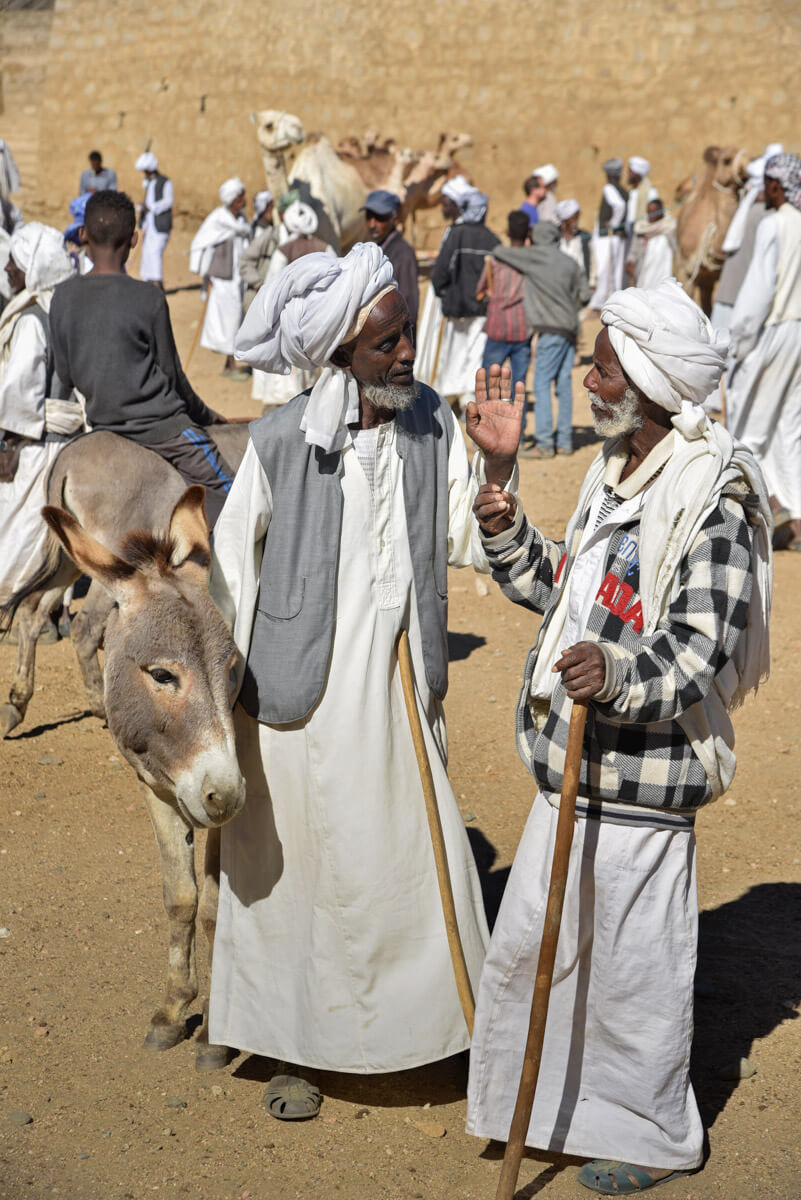
From a traveling perspective, Eritreans are kind and pleasant people to deal with.
Scams are rare and expect many Eritreans to approach you to ask your opinion about Eritrea, or what have you learned about their culture. In Asmara, they asked me this question several times a day.
Other than that, most locals talking to you just want to have a small chat because they are curious, not because they want to get something from you, unlike in neighboring Ethiopia.
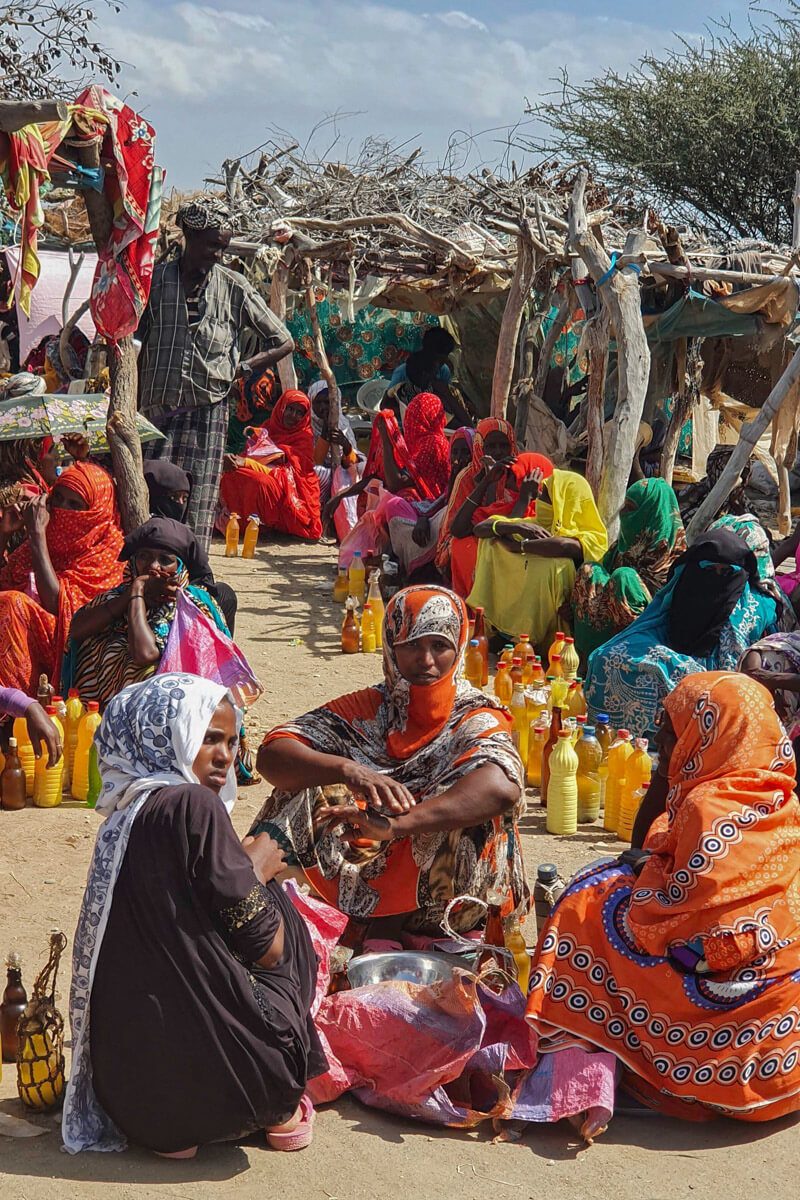
Language in Eritrea
All the languages spoken by the different ethnicities are considered official but Tigrinya – and also Arabic – is the governmental language and the most commonly used among all Eritreans.
Tigrinya is a Semitic language that comes from Ge’ez and is the official language in the Tigray region, northern Ethiopia.
It also has many similarities to Amharic, the official language in Ethiopia.
Do Eritreans speak English?
Surprisingly, you always meet someone who speaks decent English, especially in Asmara.
I also met many people speaking Italian, usually Eritreans above 60 or 70 years old.
To be very honest, language shouldn’t be a barrier when backpacking in Eritrea.
Religion
Religion is a big deal in Eritrea and, according to official sources, Christianity is practiced by 60% of the population, whereas Islam is 40%.
Most Christians are Orthodox – but there are Catholics too – from the same Orthodox branch as Ethiopians.
In most cases, religion is based on ethnicity, which means that it is very regional, with the northern part close to Sudan being very Muslim, while the area close to Ethiopia being very Christian.
Churches are always packed and I recommend you attend the Sunday service that takes place early in the morning, around 6 am, in which the locals sing some very peculiar canticles.
Are you traveling around the Horn of Africa? Check my Somaliland travel guide
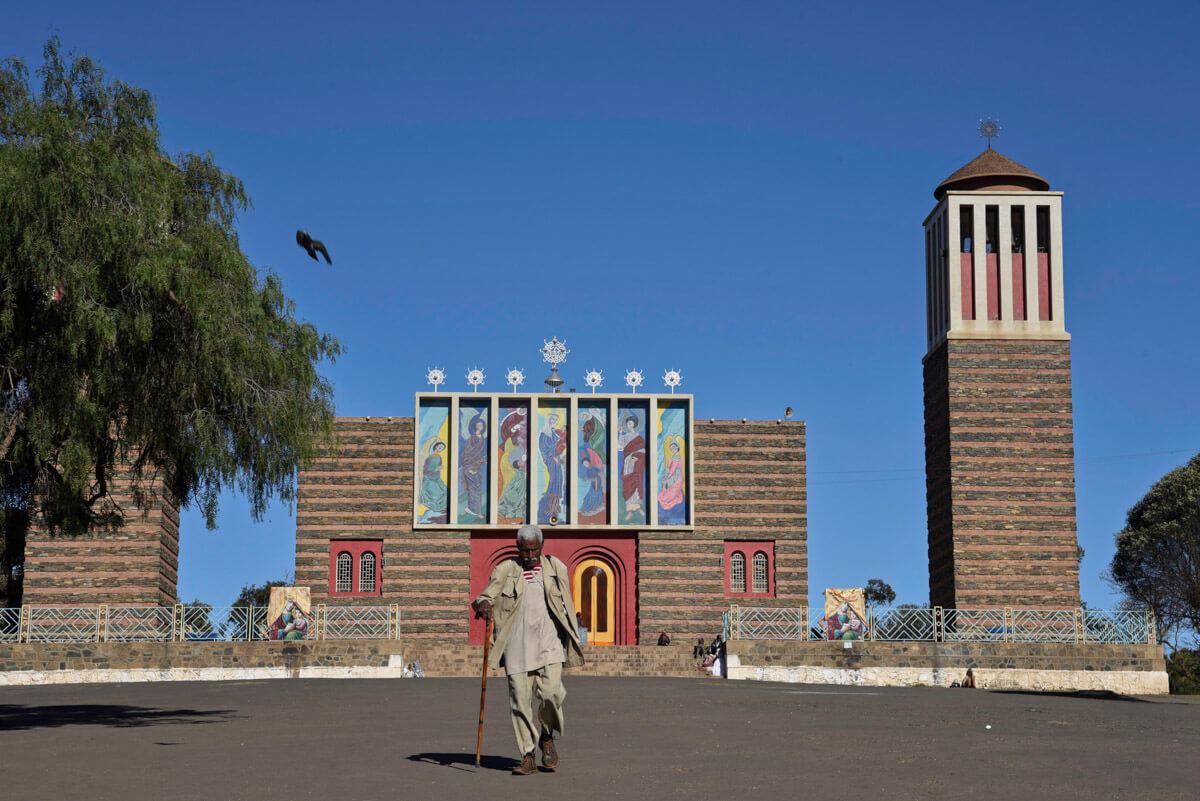
⚠️ Is it safe to travel to Eritrea?
Is Eritrea safe?
Well, it is said that Eritrea is one of the safest countries in Africa.
For real.
I have been walking in the center of Asmara at 3am, with many people hanging out outside of the different bars and nobody bothered me.
In Eritrea, you bump into the occasional intense and slightly aggressive beggar, but more often than not, if noticed by a local, they will approach and tell him to leave you alone.
Crime in Eritrea is pretty rare, everybody says so, and I never heard of any foreigner saying otherwise.
Moreover, according to the FCO advice, all of Eritrea is safe to go except for the area within 25km of Eritrea’s land borders but, in any case, as a tourist, you are not allowed to go there.
Taking photos of local people
Like in any traditional country, the streets of Eritrea are filled with great-picture opportunities.
In my experience, in Christian areas, people were mostly OK with you taking photos, and I only had a few issues in very traditional Muslim areas, even when taking photos from far away, especially if there were women in the frame.
Always ask for permission first, like you would do in any other country.
Talking about local politics in Eritrea
Honestly, the only potential danger you might face when visiting Eritrea is talking about politics.
You should never say anything negative about the Government to people you don’t know or trust, since that’s enough reason to be put away for a while.
I only talked deeply about politics with one Eritrean and every time I asked him a question, he would look around and whisper his answer in my ear.
I had never seen anything like that before. Crazy.
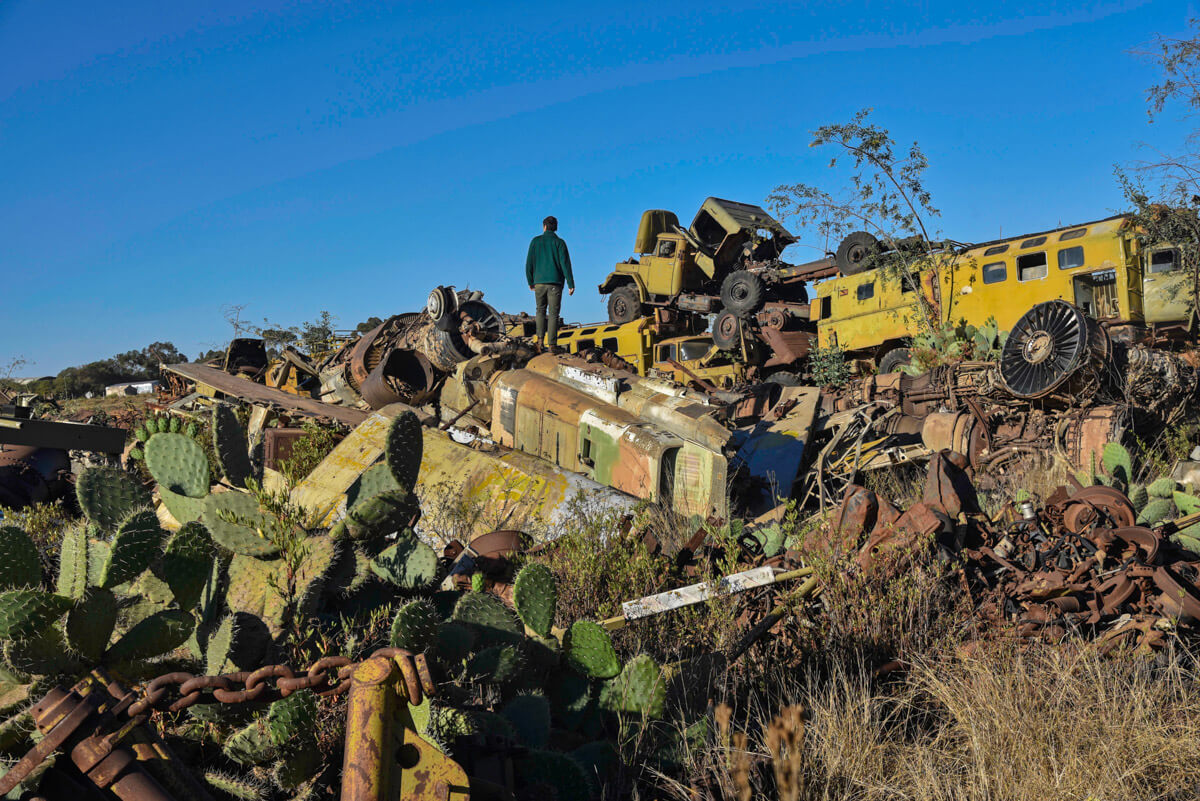
🍲 Food & drink in Eritrea
The local traditional food in Eritrea is pretty much the same as in Ethiopia, with no big difference, other than a slight change in their names and spices.
Injera, the teff-based flat, sour, fermented bread is the base of any local meal.
Some local dishes you must try are:
- Tibsi: small pieces of lamb fried in tomato sauce, always accompanied by injera.
- Shoro: spicy chickpea paste, also accompanied by injera.
- Kicha: pieces of flat bread dipped in different sauces or stews. Weird, too much bread for me.
- Foul: Smashed beans, typically eaten for breakfast
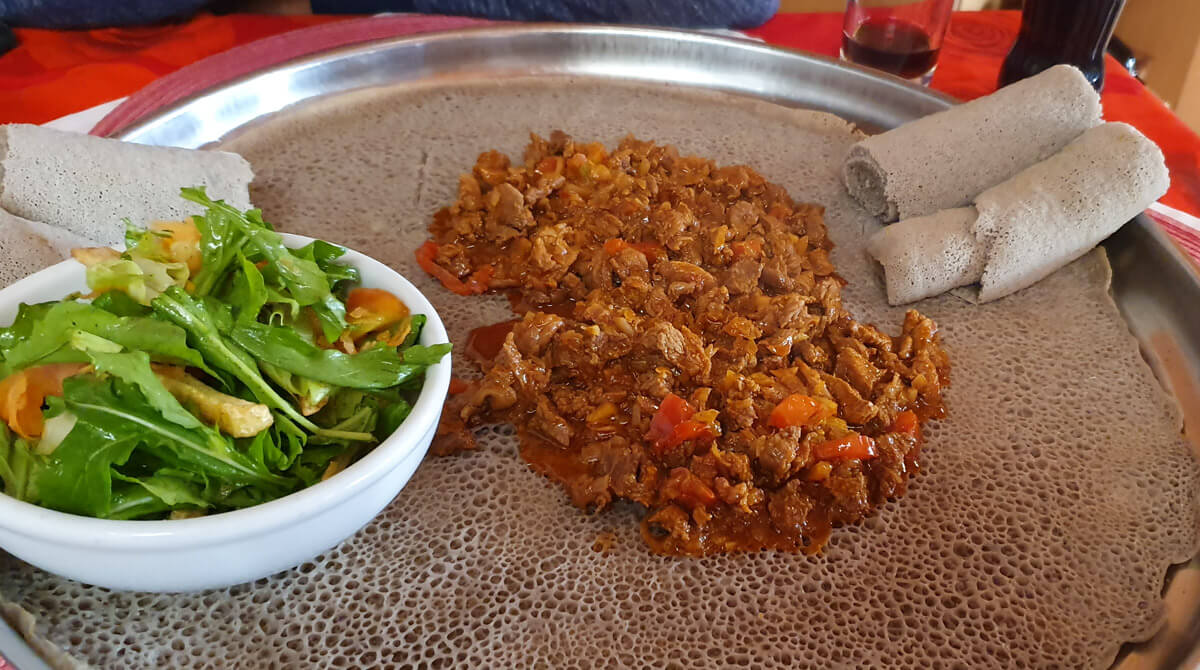
The biggest difference from Ethiopia is that in Eritrea, because of the Italian influence, you find a lot of Italian food and in some restaurants, it is great, with pasta al dente and delicacies such as caprito al forno (lamb in the oven) or parmigiana.
If you are vegetarian, you need to say you want nait-som (pronounced like night-some), which literally means fasting-food. Christian Orthodox Eritreans fast twice a week at least, days on which they can only eat vegan, so that’s why most restaurants will always serve vegetarian dishes. The traditional fasting dish usually consists of lentils and other stews with injera.
Alcohol in Eritrea
Beer is widely available in Eritrea, including in Muslim towns, but they only produce one brand: Asmara Beer.
It never costs more than 15-25 nakfas (1-1.50USD)
What is funny about Asmara beer is that it always tastes different.
Sometimes it comes so light and watery, while on other occasions it is like one of those unfiltered, thick beers. Weird.
In bars and more exclusive restaurants, you can find a wide variety of wines and spirits but since they are all imported, they are very pricey.
Coffee in Eritrea is a big deal
If you like good coffee, you will love traveling in Eritrea. Their coffee is mostly imported from Ethiopia but they prepare it in Italian style and, in the endless cafés around Asmara macchiato is the way to go. To be very honest, what they serve isn’t real Italian macchiato, but more like a Spanish cortado, but they prepare it very well, with thick foam and great presentation. If you like it strong, you need to order a black macchiato. Otherwise, they put too much milk in, in my opinion.
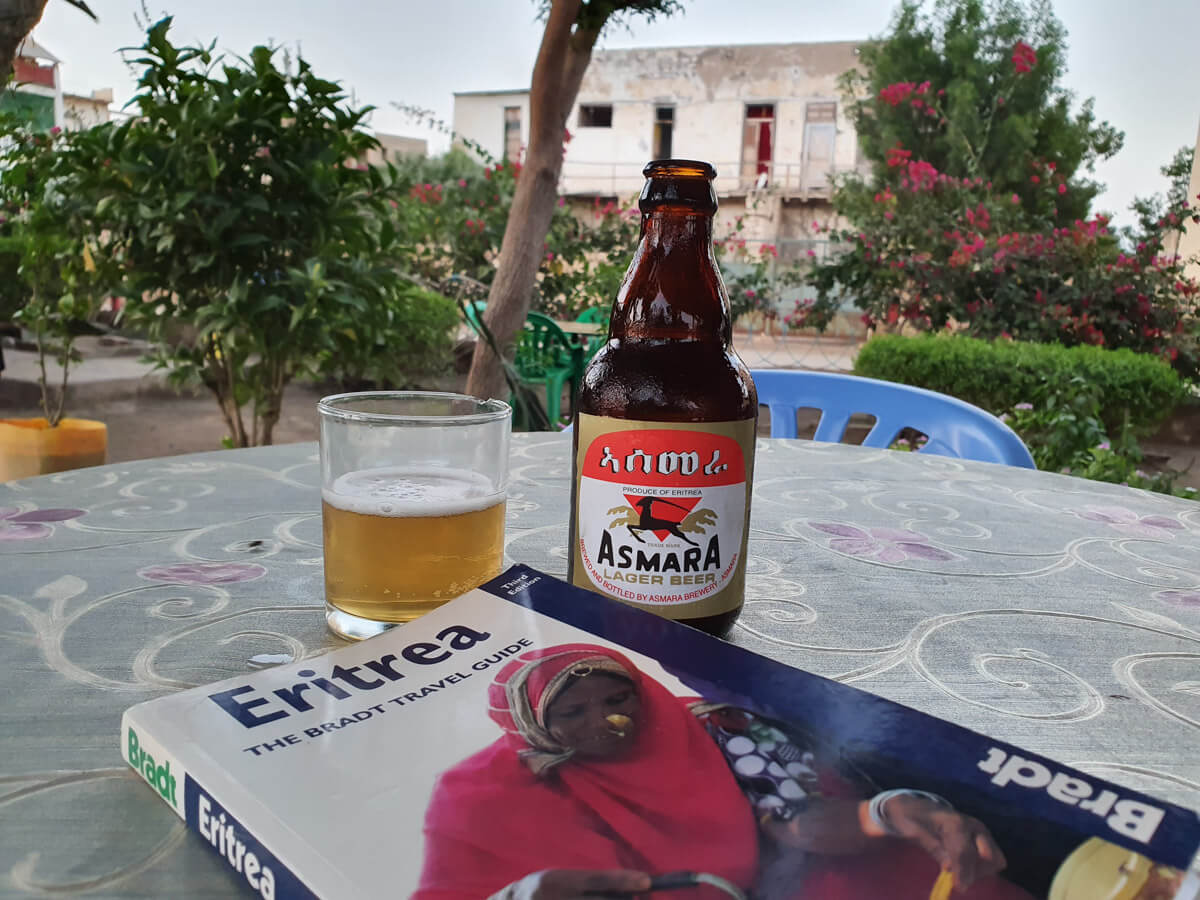
💻 Internet and connectivity in Eritrea
When you travel in Eritrea, you must assume that you’ll be offline for pretty much your entire trip.
Fact: Eritrea has one of the worst internet in the world.
On the one hand, mobile internet doesn’t exist.
There is Wi-Fi in some hotels but it’s so awful, that all you can do is send WhatsApp and emails, if it ever works.
Alternatively, you may also connect to the internet in cyber cafés. For that, you will need to buy a 1-dollar voucher that allows you to connect for 1 hour. However, the connection isn’t much faster than in hotels, plus iPhone devices usually don’t work.
In addition, you can’t use it unless you connect to a VPN.
Before traveling to Eritrea, you must download all the information needed for traveling, including maps, Eritrea travel blogs, music, Netflix movies, etc.
On the bright side, in the different cafés, restaurants, and buses, you never see anybody checking their phones but people are just talking like we used to do not many years ago.
You get used to it surprisingly fast.
Get a VPN for traveling in Eritrea
You should always use a VPN when you travel, especially when you connect to public Wi-Fi networks.
Your connection will be much safer.
Moreover, keep in mind that the only way to connect to the internet in Eritrea is with a VPN.
I recommend ExpressVPN – Extremely easy to use, fast and cheap.
If you want to learn more about VPN, check: Why you need a VPN for traveling.

💰 Money in Eritrea $
In Eritrea, they use the Eritrean Nakfa (ERN) and approximately:
1 USD = 15 ERN
A few years ago, there used to be a black market in which you could exchange 1 USD for 55ERN.
This black market, however, was eradicated and, today, you can only change in those Government-run offices named Himbol. Both USD and € are accepted.
By the way, you can also exchange in hotels at the same official rate.
Paying by card or withdrawing money in Eritrea
International cards in Eritrea can’t be used.
You must bring cash for the whole trip.
For cash emergencies, you can still collect $ from Western Union.
How much does it cost to travel in Eritrea?
Eritrea isn’t the cheapest country to travel.
It’s certainly more expensive than traveling in Ethiopia.
How can the local people survive? Well, they all rely on Eritrean diaspora, on the money they receive from their parents, sons, daughters, cousins and relatives.
These are the costs of the most typical things:
- Macchiato: 7-10 nakfas
- Breakfast (foul): 15-25 nakfas
- Vegetarian lunch: 50-70 nakfas
- Non-vegetarian lunch: 100-120 nakfas
- Internet 1 hour: 15-20 nakfas
- Water 1 liter: 15-25 nakfas
- Beer: 15-25 nakfas
- Permits: 50 nakfas each
- Public bus from Asmara to Keren: 25 nakfas
- Mini-van from Asmara to Keren: 70 nakfas
- Public bus from Asmara to Massawa: 31 nakfas
- Mini-van from Asmara to Massawa: 75 nakfas
- For hotel prices, go to the Accommodation section
The price of water in Eritrea
On my first day, I went to a local grocery shop to buy some water. They only had a 1L size and when attempting to pay, he said: 20 nakfas, almost 1.50USD. I really thought he was ripping me off, so I left the bottle and left. Then, I went to a nearby shop where prices were written, only to find out that a 1L bottle there cost 25 nakfas, almost 2USD. What the hell? I talked about this to a random local I met in a café and he said that, yes, water in Eritrea is crazy-expensive and the reason is that there used to be a local company that processed mineral water but the Government shut it down without giving any explanation, so now they have to import it from Ethiopia, and this is a huge issue because most people can’t afford it and tap water isn’t drinkable.

🏨 Accommodation in Eritrea
As you may imagine, Booking.com does not work in Eritrea.
For booking a room, you’ll have to call the hotel, either yourself or your local guide.
Independent backpackers should know that hotels are very unlikely to be fully booked so, if you can’t call from your home country, you could just show up the day you arrive.
Hotels in Asmara
Asmara has, obviously, the best offer of hotels, for all budgets.
- Budget: African Village – Best option for backpackers. A majestic colonial building in which you find rooms of all prices, from 10USD rooms with shared bathroom to 30USD.
- Budget-Mid-range: Top Five Hotel – The cheapest room you can get costs 20USD, with a private bathroom, and it is just OK, but it is clean. You can get better rooms paying a bit extra. The hotel’s restaurant is very good and it is always filled with locals.
- Mid-range: Sunshine – A fancier hotel with rooms starting at 60-80 USD. This is where we stay with our groups.
Hotels in Keren
- Budget: Sicilia Hotel – The owner speaks amazing English and his mother impeccable Italian. The rooms are very basic but clean. All rooms cost between 8 and 12USD. It has a great garden/terrace.
- Mid-range: Keren Hotel – The first hotel ever opened in Keren, right in the city center. Rooms in the 30-50USD range.
- Best mid-range: Sarina Hotel. This is where we stay with our groups. It’s the best hotel in town but it’s a bit out of the way.
Hotels in Massawa
- Budget: Luna Hotel – This is the best budget option but still, it is very overpriced. Non-AC rooms cost 20USD, and they are extremely basic, with not even plugs and a filthy shared bathroom. Otherwise, slightly better rooms with AC cost nearly 40USD.
- Mid-range: Dahlak Hotel – A fancier hotel next to Luna, with rooms starting at 60-70USD. This is where we stay with our groups.
🛺 Transportation: How to travel around Eritrea
As long as you have the necessary permits, you can move around Eritrea independently by public transportation.
Traveling around Eritrea by bus
Bus is pretty much the only way to travel between Eritrean towns and cities. There are both minivans and big public buses. I recommend you go early in the morning, otherwise, you may find very long queues and have to wait there forever and, occasionally, pushing hard and getting a bit aggressive is the only way to find a seat.
Update 2024: Getting on a bus is becoming more and more complicated due to the high demand, to the extent that the Tourism Office is denying travel permits to backpackers who wish to travel by bus.
Traveling around Eritrea by train
The beautiful steam train that used to run from Asmara to Eritrea doesn’t work anymore and today, the only functional section is the one that runs from Asmara to Nefasit and it only works for the occasional tourists who book the whole train in advance.
If you were a group of 15, you would pay around 50USD per person, and that’s something you should arrange with your local guide.
Renting a car in Eritrea
It’s possible to rent a car in Asmara, but that usually comes with a driver. Prices start at 100 USD per day.

❗ More information for traveling to Eritrea and the Horn of Africa
📢 In my Travel Resources Page you can find the list of all the sites and services I use to book hotels, tours, travel insurance and more.
A guide and article for traveling in Eritrea destination
Travel guides to other countries in Africa
